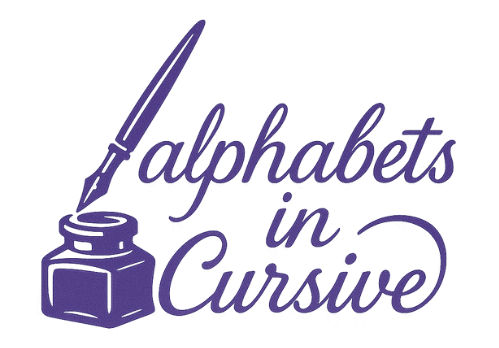Cursive Alphabet: Letter S Worksheet and Practice Methods
The cursive letter S has a soft curve and a flowing tail that makes it look different from the printed version. It needs a bit more hand control than simpler letters, but with a few guided steps and regular practice, it becomes easy to write.
You’ll learn how to write both uppercase and lowercase S, link them to other letters, and build confidence with clear, step‑by‑step practice. A free printable worksheet is ready for you to download and use right away.
Let’s begin with the worksheet.
Download Free Printable Cursive S Worksheet
You can get a printable worksheet that focuses on writing the cursive letter S. It includes guided tracing for both uppercase and lowercase forms, dotted letters to practice with more control, and blank lines for writing freely.
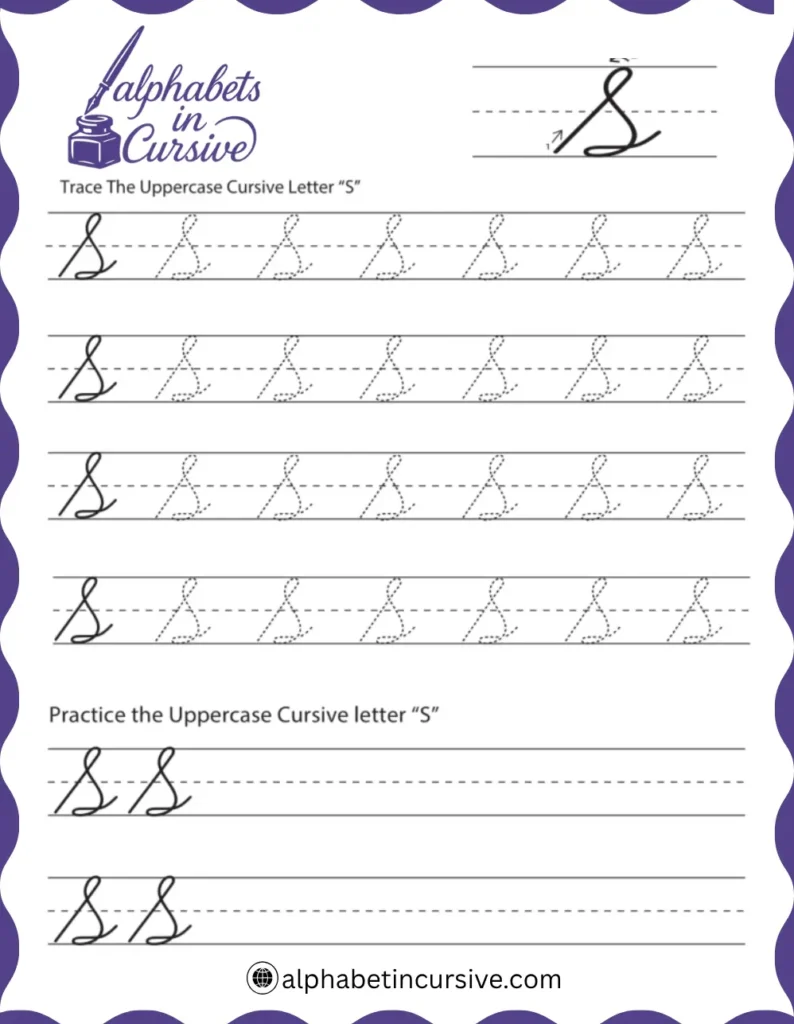
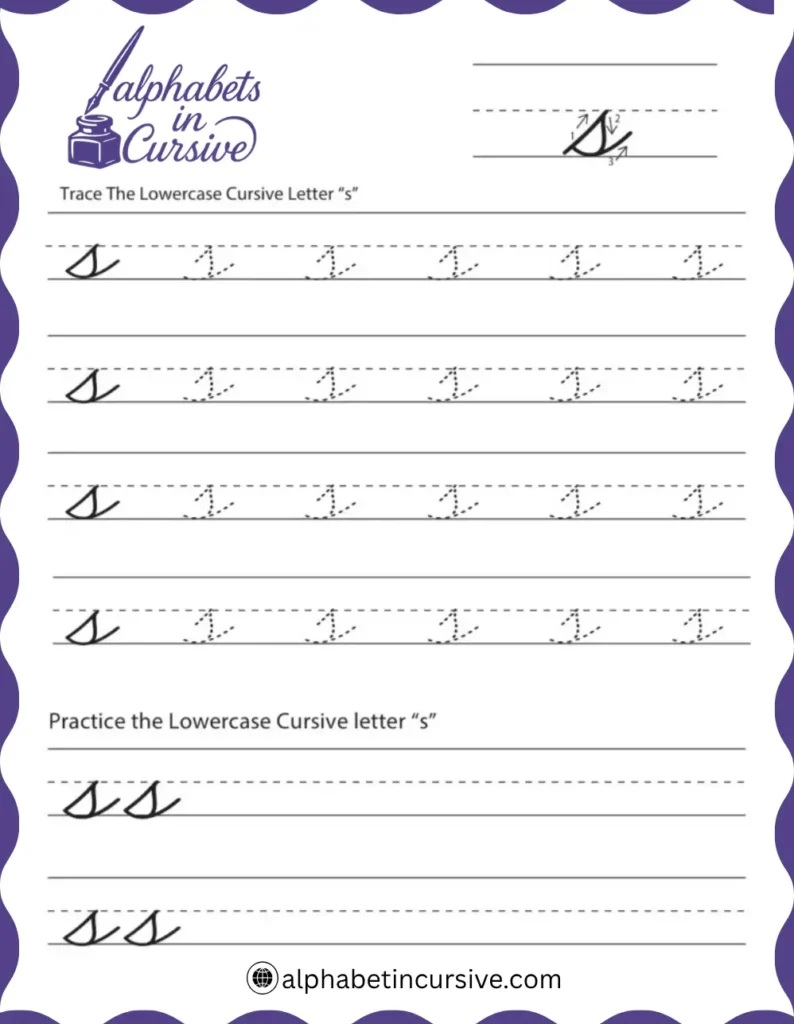
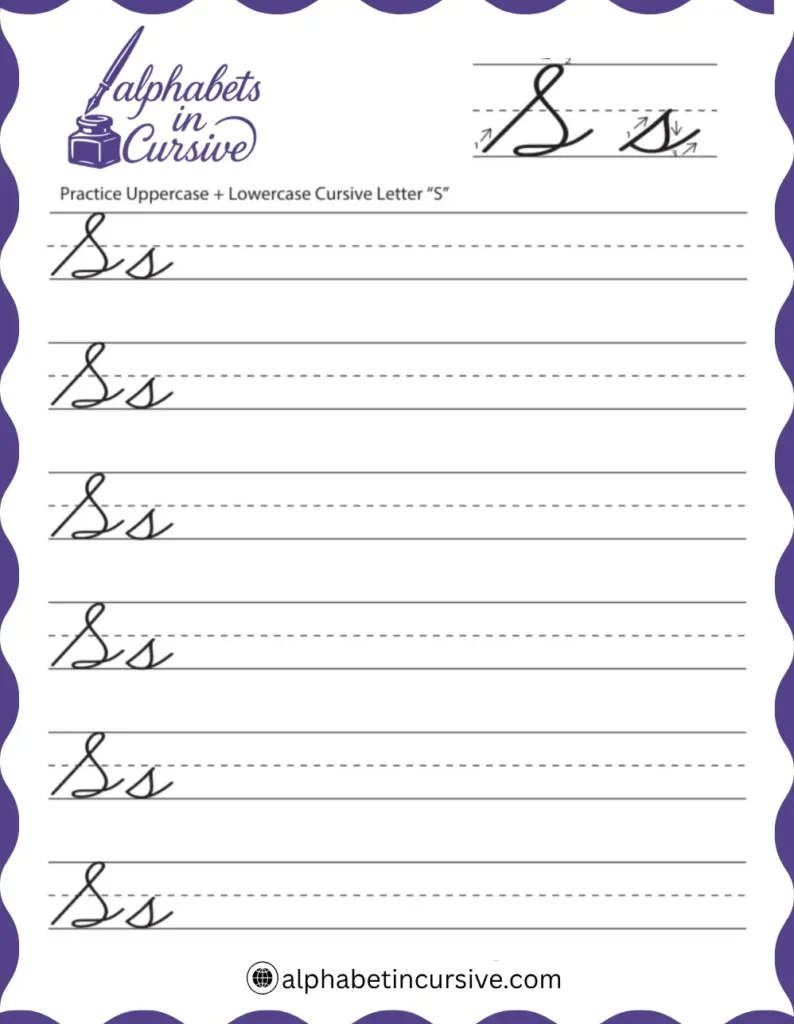
How to Write the Cursive Letter S
The cursive S has a soft, double-curve shape that makes it feel different from most other letters. It needs light hand control and clear direction.
How to Write Lowercase Cursive S
Keep the strokes light and round. It should flow like a small figure-eight turned sideways.

- Start just below the midline
- Curve upward gently to touch the midline
- Loop back down to the left, crossing over the first stroke
- Curve around to the right, forming a small loop under the midline
- Continue the stroke down toward the baseline
- Finish with a small upward curve, just above the baseline, to connect to the next letter
How to Write Uppercase Cursive S
The top loop is small, and the bottom one is larger together, they should look balanced like a smooth, sideways “8” stretched tall.

- Start at the baseline
- Move up and to the right, forming a small curve that rises toward the midline
- Loop back to the left and curve downward into a wide lower loop
- Let the bottom loop reach down to the baseline
- Finish with a gentle upward tail if you want to connect to the next letter
How to Connect Cursive S to Other Letters
Cursive S connects a bit differently from other letters. Its tail can curve into the next letter, or stop cleanly, depending on what comes next.
How to Connect Lowercase Cursive S
Lowercase s usually connects from its upward finishing stroke just above the baseline. Keep the exit stroke narrow. If it’s too wide, it may bump into the next letter.
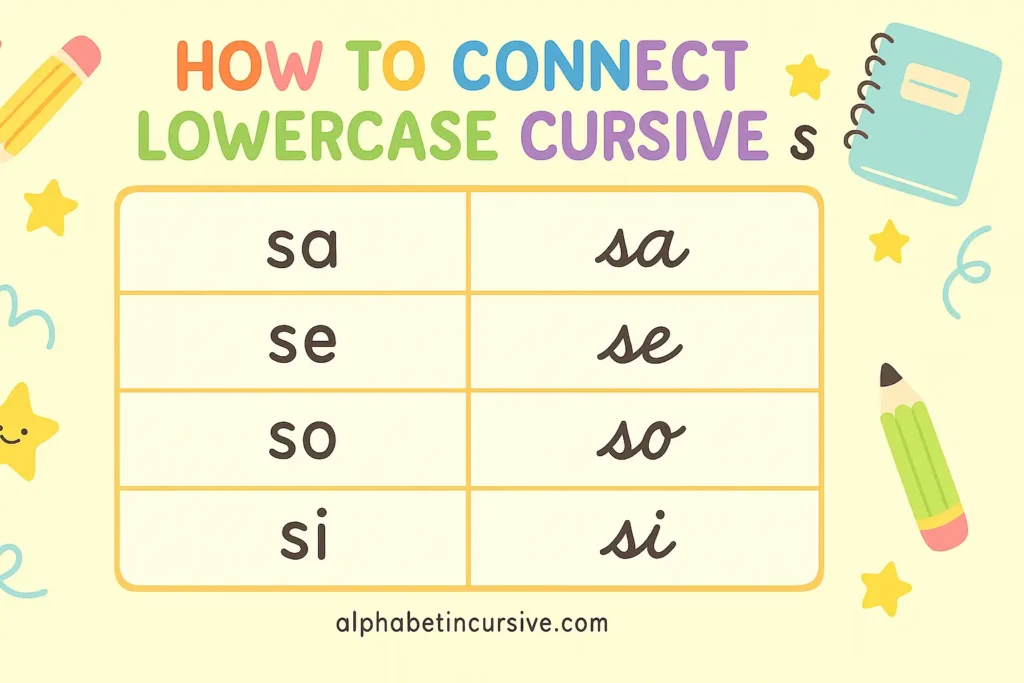
What to know:
- After the lower loop, continue with a slight upward stroke
- This stroke moves into the next letter without lifting the pencil
- It connects best with round letters like a, e, o and soft curves like u or i
Examples: sa, se, so, su, si
How to Connect Uppercase Cursive S
Uppercase S is often used at the beginning of words, especially in names. Some people choose not to connect it to the next letter.
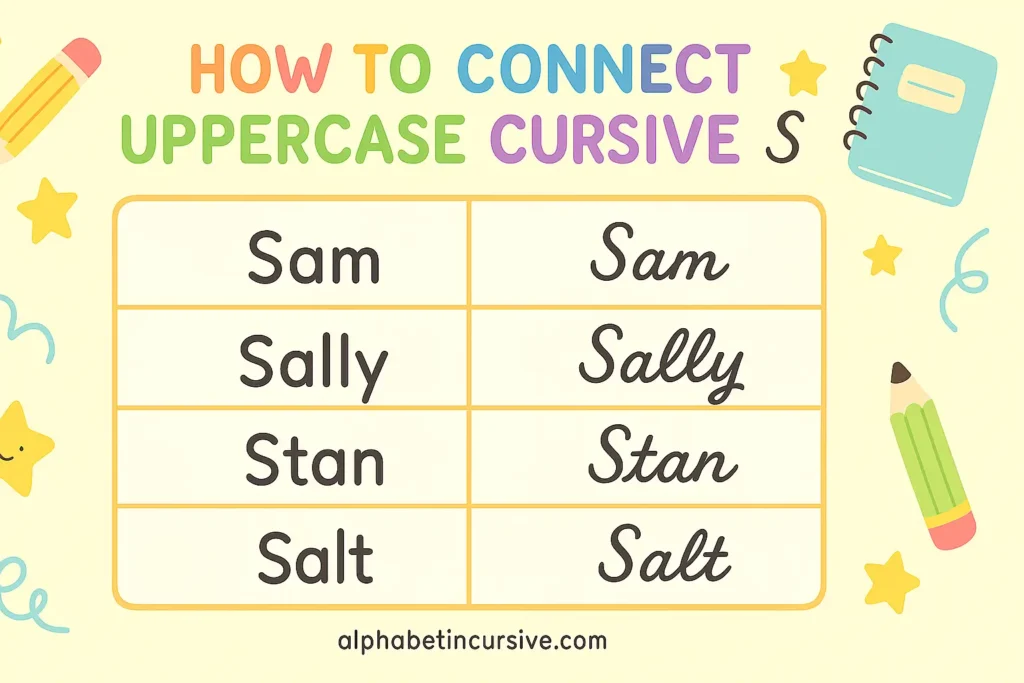
When connecting:
- Add a short upward stroke at the end of the bottom loop
- Let this stroke flow into the next letter’s starting point
- It works best when followed by letters like a, l, or t
Examples: Sam, Sally, Stan
Tip: If it feels awkward to connect, it’s okay to lift your pencil. The writing should stay neat and readable either way.
Practice Methods for Writing Cursive S
Practicing cursive S takes patience and steady hand movement. These steps help build that control over time.
- Start with stroke drills
On lined paper, draw small loops and figure-8 shapes to warm up your hand. - Trace full letters
Use worksheets with guided arrows. Trace both uppercase and lowercase S several times to understand the motion. - Use dotted lines next
Practice over dotted S letters until you can follow the path smoothly without hesitation. - Break down the shape
For uppercase S, practice the top and bottom loops separately before writing the full form. - Keep posture steady
Sit straight, rest your forearm on the table, and let your fingers move freely across the paper.
Frequently Asked Questions
Why does cursive s look different from printed s?
Cursive letters are made for smooth, flowing writing. The cursive s curves and loops in a way that helps it connect to other letters without lifting the pencil.
Is it okay if my cursive s looks like a small loop?
Yes. That’s the correct shape. Lowercase s in cursive often looks like a sideways loop or a soft hook. It doesn’t need to match the printed version.
What are some easy words to practice with cursive s?
Try words like sun, soap, sit, see, Sam, or Sally. These help you connect s to both vowels and consonants in a natural flow.
